

|
|
Captures images of objects around corners and behind obstacles |
|
|
Light scattered back off of hidden target used to reconstruct a 3D model of the target |
|
|
Involves scattering laser light off of surrounding objects onto a hidden target |
|
|
Many potential benefits for autonomous vehicles, public health, and medical imaging |
A direct line of sight between an object and a camera or detector is typically needed for every imaging application except for extreme cases such as light bending due to gravitational lensing in astronomy. But for the most part, imaging applications are limited to light propagating in a straight line. However, that is starting to change as some cutting edge research is opening up possibilities to image around corners and around obstacles. A combination of lasers, sensitive cameras, and computational reconstruction methods can be used to detect objects hidden by obstacles by scattering light off of surrounding objects.
The process for non-line-of-sight imaging is similar to that of LiDAR (light detection and ranging), where a laser pulse is sent towards an object and the time-of-flight of the light scattering back off of the object is used to measure the distance between the object and a detector. However, non-line-of-sight imaging images objects obscured by obstacles by adding another scattering event to this process.1
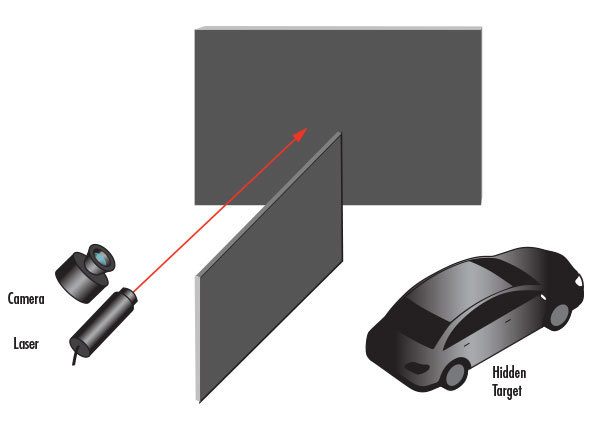
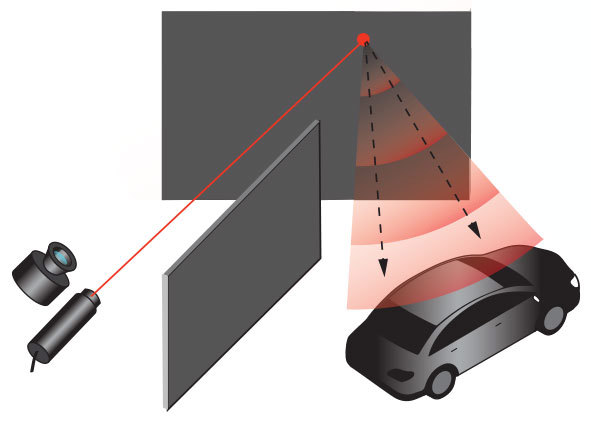
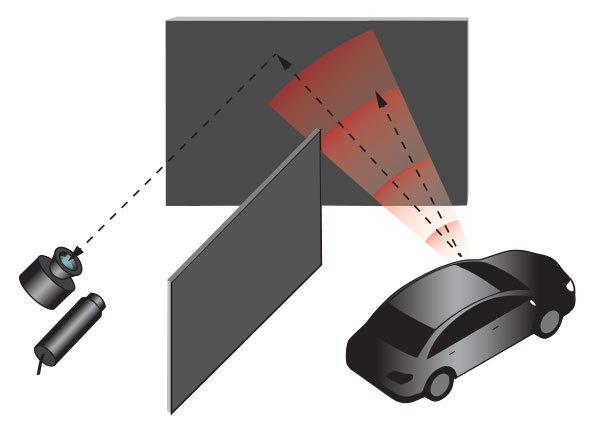
Highly sensitive cameras such as single-photon avalanche photodiode array cameras are needed to measure the propagation of picosecond and femtosecond pulses of light in real time. The detector receives two different return signals: an initial signal of light scattered directly off of the wall and a secondary signal of light scattered off of the target, which is the signal used for non-line-of-sight imaging. This time-of-flight information is then used to reconstruct a series of ellipsoids that all overlap at a given point on the hidden target, allowing computational software to calculate the distance between the camera and the hidden target and recreate a 3D model of the target.
A 3D object can be broken down into a collection of many individual points that scatter light. The summation of all of these points can reconstruct a model of the original object. If the detector can distinguish return pulses with a temporal resolution of 100ps, this corresponds to a spatial resolution of points on the hidden target of approximately 1.5cm. 1
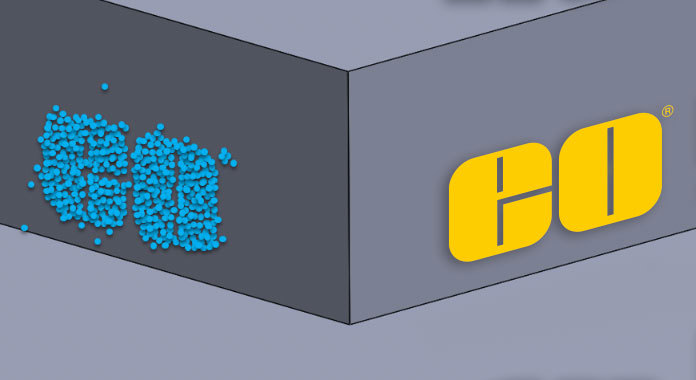
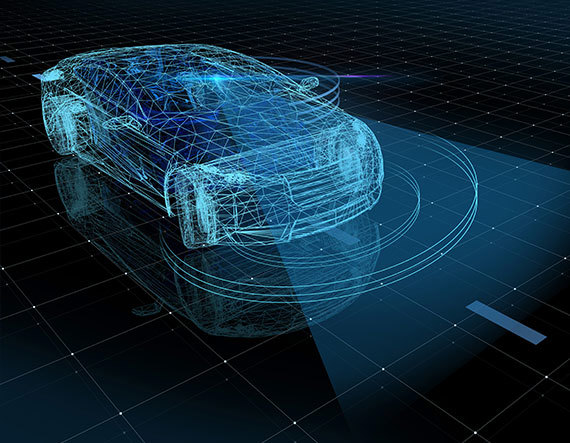
Allow cars to sense approaching vehicles or pedestrians around corners before they are in the car’s direct line of sight2

Let law enforcement, firefighters, and emergency medical services detect presence of people in dangerous situations from a safe distance2

Investigate small 3D structures hidden from the system’s direct line of sight2
Taking this emerging technology and creating a practical solution for real-world use that is portable and not dangerous to observer’s eyes is extremely challenging. One of the main issues with non-line-of-sight imaging is the limited amount of light that makes its way back to the detector, which must be able to pick up this very small amount of light and differentiate it for any ambient light sources. The return signal to the detector is the result of two consecutive scattering events, leading to an extremely high loss. Return signals can be as low as one photon per laser pulse.1
However, the Stanford Computational Imaging Lab has developed a non-line-of-sight imaging system that works outdoors under indirect sunlight.2 They successfully imaged an object made out of retroreflective tape that was obscured by a wall, which bodes well for the future of this technology.
The lab of Aristide Dogariu of University of Central Florida is investigating non-line-of-sight imaging utilizing the spatial coherence of light hitting a wall instead of laser light scattered off of that wall and the target behind it.3 This could lead to modeling of the hidden target without requiring ultrafast laser illumination, making real-world applications of the technology more portable and easy to use.
More development is still needed before non-line-of-sight imaging technology becomes available in practical commercial systems, but it is a promising solution for the next generation of imaging applications.
Edmund Optics® (EO) designs and manufactures imaging lenses and ultrafast laser optics, which are both used in non-line-of-sight imaging systems.
 Does EO sell full systems for non-line-of-sight imaging?
Does EO sell full systems for non-line-of-sight imaging?
 Doesn’t the laser light initially scattering off of the wall overpower the secondary scatter of light off of the hidden target?
Doesn’t the laser light initially scattering off of the wall overpower the secondary scatter of light off of the hidden target?
The light scattering directly off of the wall is much stronger than the secondary scatter of light off of the indirect object, but there is a time delay between them that allows highly sensitive detectors with a high enough temporal resolution to differentiate the two signals.2
 Once the time delay for the secondary scatter off of the hidden target is captured, how does the computational reconstruction software recreate a 3D model of the object?
Once the time delay for the secondary scatter off of the hidden target is captured, how does the computational reconstruction software recreate a 3D model of the object?
The software first stores all measurements in a 3D spatial-temporal volume. It then resamples measurements along the time axis, convolves the result with an inverse filter in the frequency domain, and resampling result along depth axis to recover the hidden object.2
 How long does it take to reconstruct a 3D model of the hidden target after acquiring the data?
How long does it take to reconstruct a 3D model of the hidden target after acquiring the data?
The Stanford Computational Imaging Lab’s non-line-of-sight imaging procedure only takes 0.5s to generate the 3D model.2
or view regional numbers
QUOTE TOOL
enter stock numbers to begin
Copyright 2023, Edmund Optics Inc., 18 Woodlands Loop #04-00, Singapore 738100
California Consumer Privacy Act (CCPA): Do Not Sell or Share My Personal Information
California Transparency in Supply Chains Act